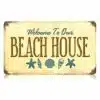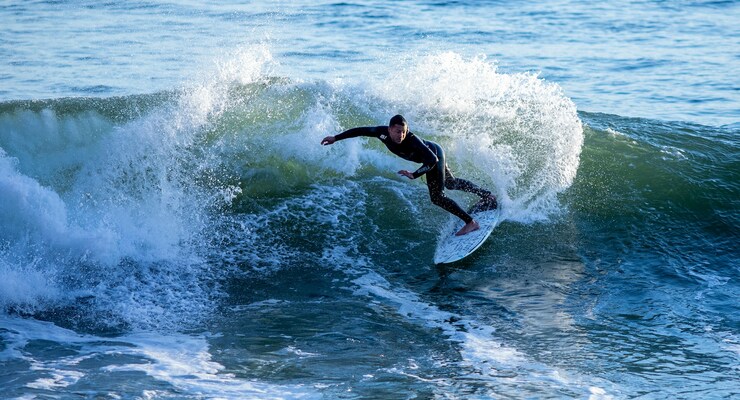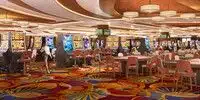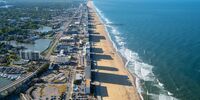Atlantic Park is becoming far more than just a wave facility — it signals how urban recreation transforms when bold ambition is grounded in local culture. Pharell’s project, anchored on bringing consistent, high-quality surfing to Virginia Beach year-round, is poised to shift the city’s leisure identity from seasonal shoreline to a curated lifestyle destination. Its value comes from uniting athletic experiences, shared urban environments, and economic growth into a single destination — borrowing lessons from successful urban revitalizations elsewhere.
Strategic Positioning and Audience Craft
The planners behind Atlantic Park understand that launching a destination requires the same discipline as a marketing strategy for restaurant — knowing who the core audience is, what experience they seek, what local gaps can be addressed, and how to turn casual visitors into repeat evangelists. Just as a restaurant maps customer journeys, loyalty triggers, and promotional touchpoints to build habit and buzz, the project is designing engagement loops for surfers, families, remote workers, and event-goers, layering in public programming and visibility so the park becomes an organic part of daily life, not a one-off attraction.
Surfing as Urban Anchor
Surfing itself is being recast from a niche athletic pursuit into a community-facing anchor. Reliable wave conditions eliminate the old seasonal constraints, so surf schools, youth initiatives, wellness retreats, and competitions can run on steady, predictable schedules. Predictable surf-driven traffic sets off a chain reaction, making nearby retail, dining, and cultural ventures more viable and enticing to back. The sport defines the identity, while the park builds the ecosystem — offering coaching, gear hire, viewing platforms, and hybrid labs where tech and craftsmanship converge. Residents gain a new local pastime; visitors gain a reason to extend stays.
Anticipated Impacts
- Economic diversification: Year-round surf activity spreads foot traffic beyond summer tourism spikes.
- Community access: Programs aimed at local youth and underrepresented groups make the ocean more inclusive.
- Health and wellness: Consistent recreational opportunity supports mental and physical wellbeing.
- Event tourism: Competitions and branded festivals bring outside audiences with downstream spending.
- Place branding: The city is defining itself through a hybrid identity — where the authenticity of surf life meets the drive of civic progress.
These effects are interdependent: stronger branding pulls more visitors, which funds more programming, which deepens local buy-in.
Design Philosophy and Operational Intelligence
Pharell’s team has built the park around a few practical principles: adaptability, transparency, and data-informed management. The design anticipates variable crowd flows, layered use (active surf zones alongside calm public promenades), and modular programming. To keep the experience smooth and responsive, they look to analogs in hospitality and service operations — where knowledge of patrons’ preferences and behavioral patterns informs real-time adjustments. Tools like Eat App illustrate that idea: when operators have granular visibility into guest data, they can proactively surface optimal timing, prevent overload, and personalize outreach. Atlantic Park intends comparable operational intelligence for scheduling wave sessions, public events, food vendors, and maintenance so the site feels lively without tipping into chaos.
Community Integration and Sustainability
Integration with neighborhood fabric is a priority; the park isn’t walled off as an isolated attraction. Public transit links, shared gathering spaces, and local vendor inclusion ensure benefits diffuse. Sustainability is baked into water usage systems, energy-efficient facilities, and programming that educates about coastal stewardship. The project aims to model a recreation hub that respects both ecological balance and urban equity.
Challenges and Opportunities
Atlantic Park faces predictable tensions: balancing tourist draw with resident access, monetizing premium experiences without locking out grassroots participation, and maintaining wave quality while scaling usage. The opportunity lies in co-governance models, transparent pricing tiers, and leveraging local creative communities to keep programming fresh. If managed well, the park becomes a platform for experimentation in urban play, youth mentorship, and even climate resilience showcases.
Conclusion
Pharell’s Atlantic Park is more than new infrastructure — it is a pivot in how Virginia Beach conceives of its relationship with the ocean and its own urban life. By treating surfing as both sport and civic anchor, applying strategic audience thinking similar to top-tier hospitality campaigns, and embedding operational intelligence inspired by service leaders, the project could catalyze a broader shift in urban recreation. The future of surfing in the city may soon look less like a summer ritual and more like an integrated, year-round cultural pulse.

















